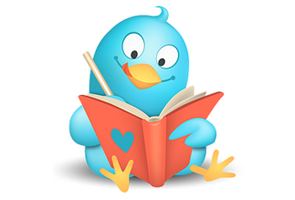There is no more powerful platform on the web than Twitter for rapidly sharing and exchanging link content. Only Facebook comes close to its effectiveness, and I think it goes without saying that, while the two share certain functional attributes, they are very different in their presentations of content.
If your tweets are worth the attention, that is.
So what criteria do we go by to determine that? Is there a formula that works best?
As far as the content goes, there is no formula. Every brand is different. They all have different audiences, and the way you communicate with yours is likely different even from a brand that is very similar in its product or service offerings.
The formula comes in the presentation and delivery. There are several things to consider when coming up with effective tweets. First, there is the ever-present confine of 140 characters. It may not seem like much until you realize that the words in this sentence add up to 100 characters.
Now, I know what you’re thinking: “Great! That means I still have 40 characters to work with!”
Well, you’re somewhat right.
You do, in fact, have 40 more characters. What is going to make your tweet effective is how you use them. That’s where the formula comes in.
Now, I’ve read guides on writing tweets that say that you need to make effective use of all 140 characters. That’s true enough, but those sources also suggest that those characters are used to deliver the message. Let me show you a better way.
The perfect tweet looks something like this:
Tweet: 100 characters
Link: 20 characters
Reserve: 20 characters
So why am I asking you to constrict your message in this way? Well, for starters, it’s not all that constricting. I’ll refer to back to my previous example as proof.
Second, you need to reserve space for your link. I recommend using bit.ly or another URL shortening service to conserve even more.
Finally, you need to anticipate what happens with your tweet after you send it. The idea is that people retweet it or share the content with other users. In many cases, they aren’t going to simply retweet to their entire list. They are going to use @tags and target specific users. You want them to have enough characters to be able to do that, even for a longer username, hence the reserve of blank characters.
Of course, these numbers will fluctuate a little, but these numbers are an excellent gauge.
So now that we know how an effective tweet is constructed, let’s look at the quality of the actual content. If the content isn’t relevant or engaging, it won’t matter how many characters you reserve for @tags (mostly because no one is going to be sharing it). Here are a few ways to make sure your word gets around.
1. Know your audience. It’s content marketing 101. Know who is reading your tweets and think like them as you write.
2. Engage your audience consistently. Maximizing your visibility is the best way to get your content discovered and shared. This is true of any social media platform.
3. Think headline, not storyline. You only have 100 characters to get the reader’s attention, so make sure your message is concise and coherent. The best way to do that is to write in headline style using compelling and emotional language to elicit the response to share or retweet.
4. Watch the grammar, spelling, and punctuation. Always use clear, understandable language and, when relevant, correct punctuation. If you don’t know already, this is one of the biggest things that people criticize (and sometimes quite vocally) about content. If it doesn’t appear to be intelligent, it is a real turn-off.
The Effective Tweet Checklist
Finally, we come to the quality control portion of our tweet creation process. Make sure that your tweet has the following elements for maximum effectiveness.
• Always begin with a capital letter, and always start new sentences with capital letters.
• Use the right words. You’re and your are not the same word. Don’t use them interchangeably.• Don’t type in all-CAPS. People will think you’re yelling.
• Ditch the TXT SPK. Seriously, you’re not trying to organize an after-school rendezvous with your significant other here. This is business. Treat it that way.
So, now that you’re at the end of the article, you have in your hand an arsenal of information that any custom writing professional such as I would tell you is a recipe for great success when you are tasked with writing effective tweets. Go forth, then, and spread your brand message far and wide (but reserve 20 characters so others can help you do it)!
